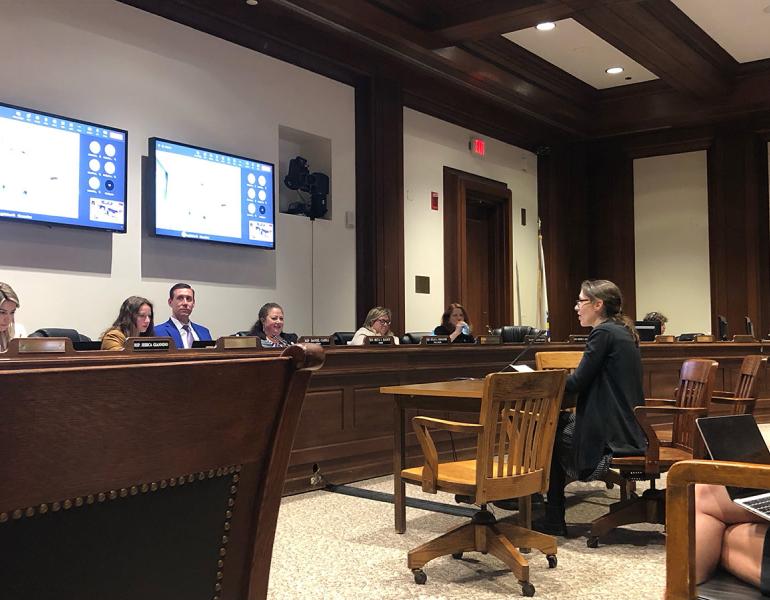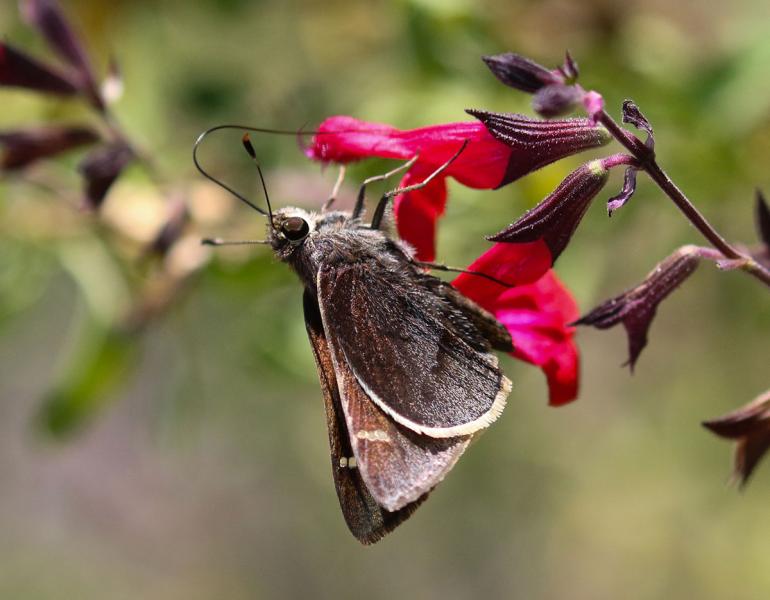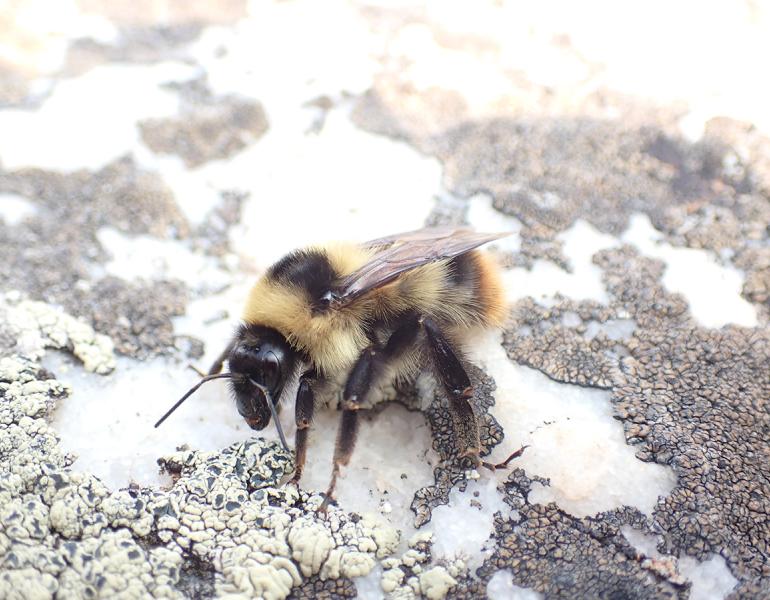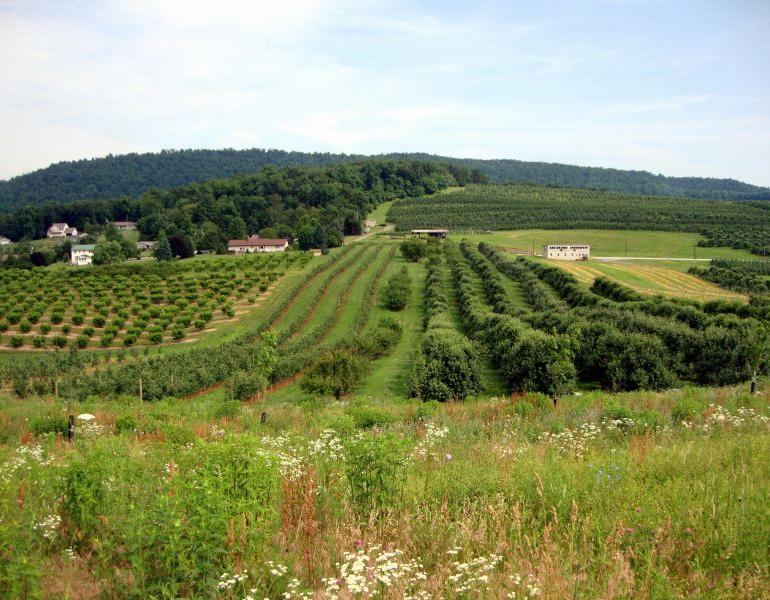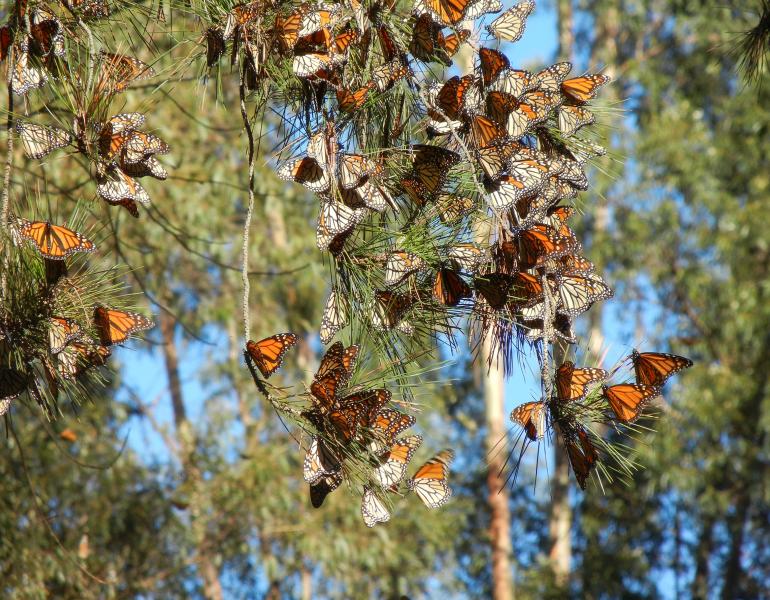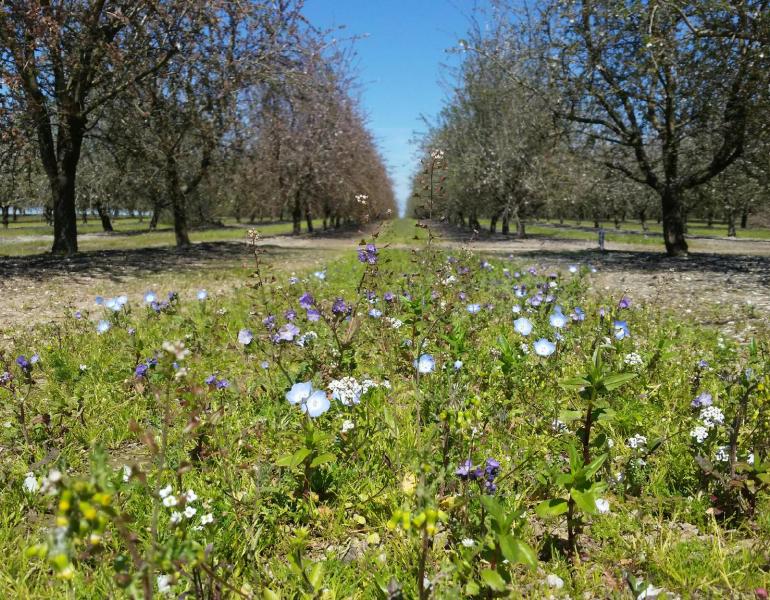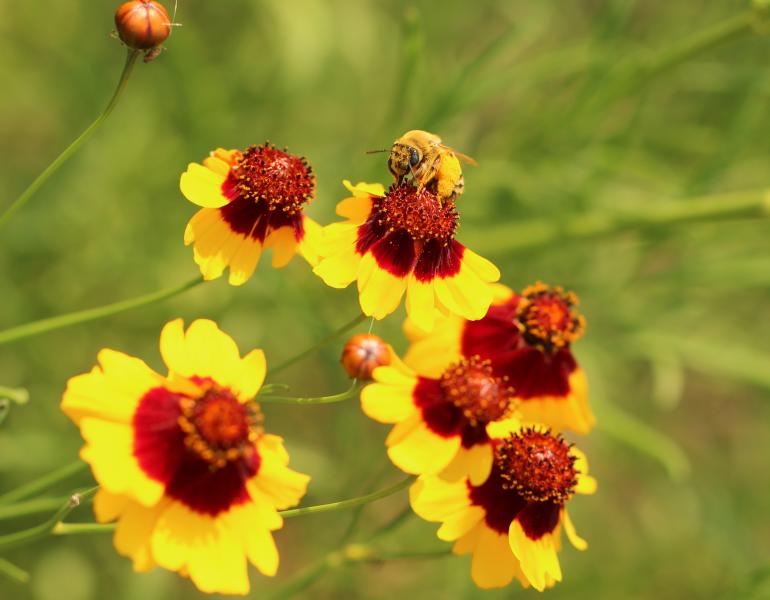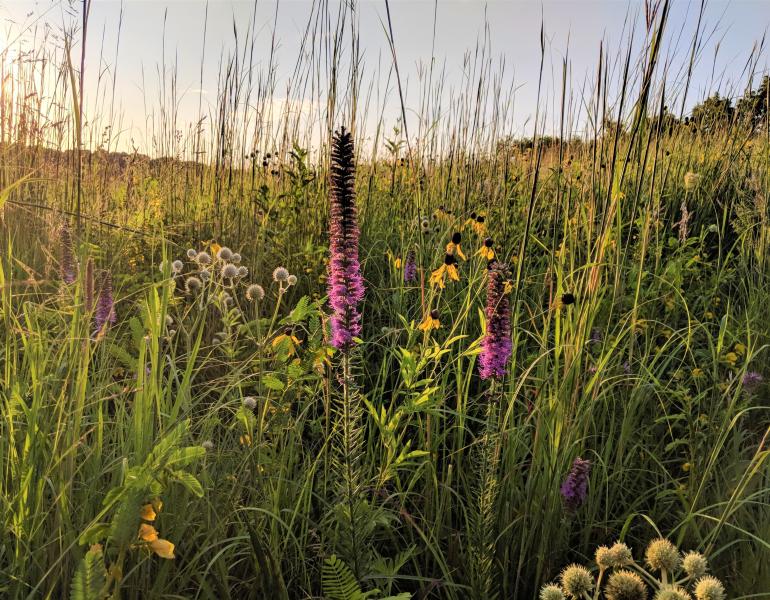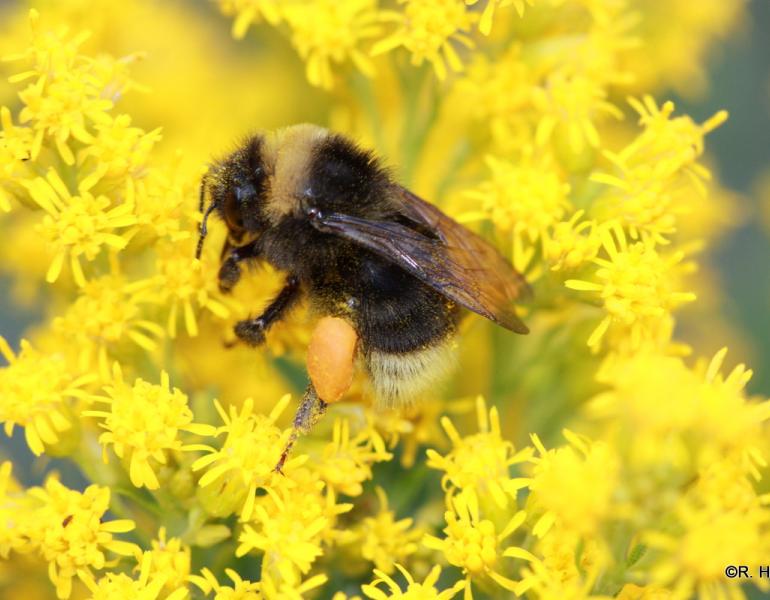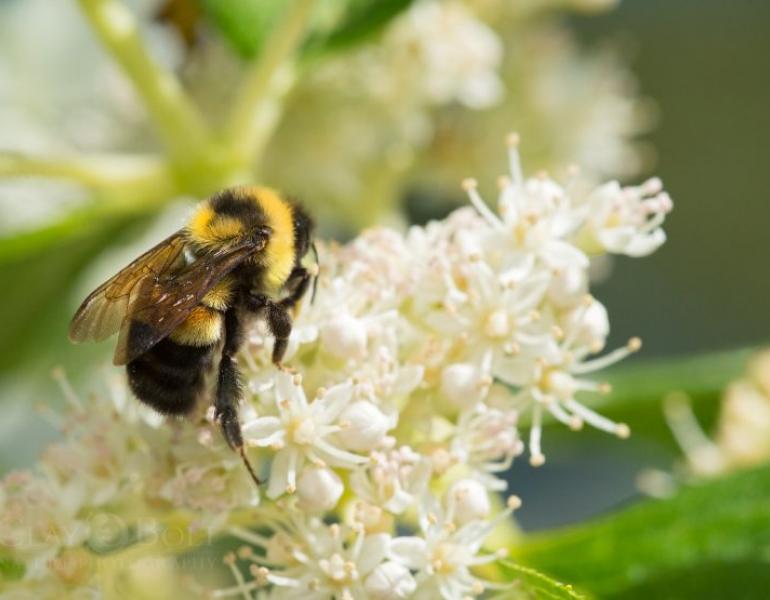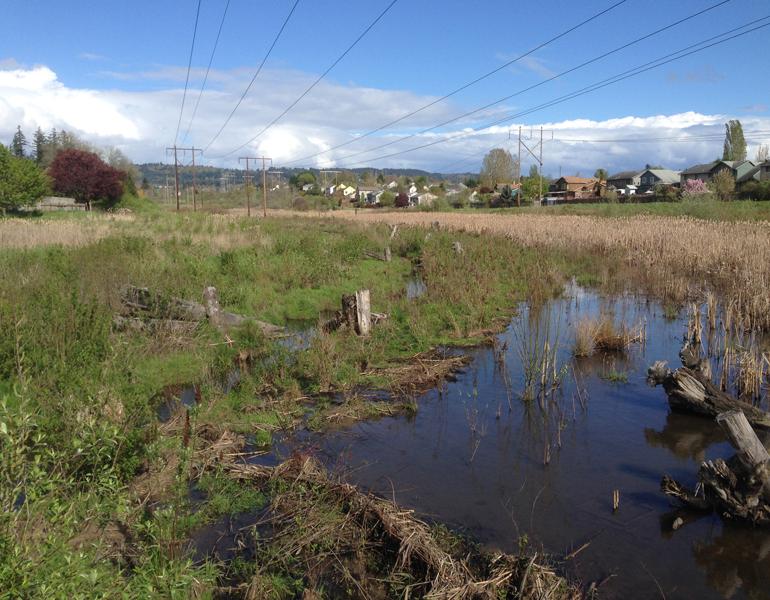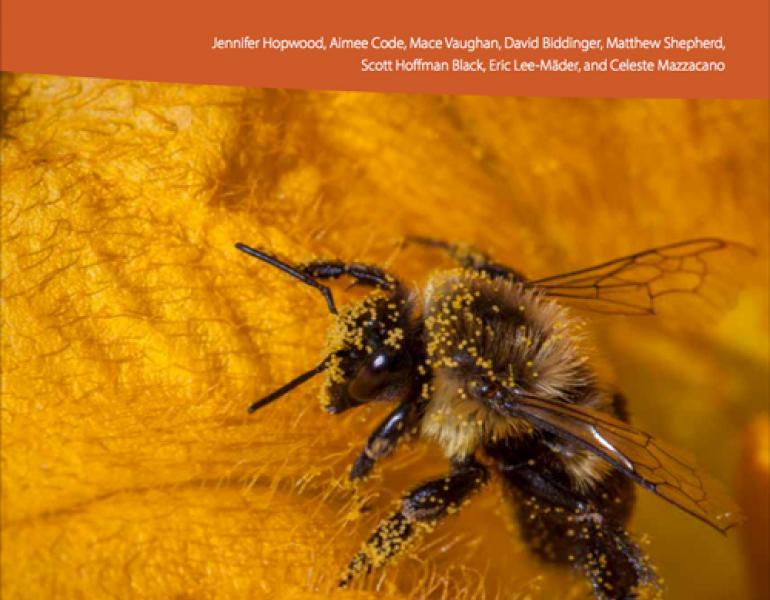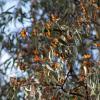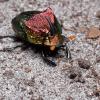Without our federal public lands, many invertebrates—and the plants and other animals that depend on them—would be in trouble. You can help speak up for these incredible places.
Legislation and Policy
Burning for Butterflies: The Role of Fire in Western Forests
While it may seem counterintuitive to burn plants and trees to conserve wildlife, smaller fires are an essential element of many habitats, like ponderosa pine forests.
The EPA's New Strategies to Protect Endangered Species from Pesticides Need Improvement
The Environmental Protection Agency’s new rules represent progress toward reducing the risk of pesticides, but there are flaws in the plan that limit its effectiveness.
Court Tells Federal Agency to Rethink Widespread Pesticide Spray Program
Xerces won a lawsuit that will help to reshape the federal grasshopper management program into one that better supports everyone: ranchers, farmers, and wildlife.
What We Can Learn From Québec’s Success With Regulating Pesticide-Treated Seed
Regulating pesticide-treated seeds benefits both growers and wildlife — and is becoming more common.
States Make Way for Pesticide Reforms
Xerces is working with several state legislatures to advance policies that regulate pesticide use and availability for the benefit of pollinators and other wildlife.
Without State-Level Protection, These Invertebrates Face an Uncertain Future
These nine valuable and vulnerable insects are living in states where state wildlife agencies can't effectively protect them because state law doesn't include insects in the formal definition of wildlife. We're working to change that and protect these incredible invertebrates for years to come.
Insects Are Wildlife, Too
State wildlife agencies are vital to species conservation, but they can't effectively protect ecosystems when legal barriers exclude certain animals from their jurisdiction. There are several U.S. states that have little or no ability to manage and protect insects.
D.C. Monarch Summit Secures Funding for Monarch Conservation
Last week, myself, Sarina Jepsen, and Sarah Hoyle of Xerces joined a two-day Monarch Butterfly Summit at the U.S. Capitol Visitor Center in Washington, DC. Hosted by Oregon Senator Jeff Merkley in collaboration with the Department of the Interior, the event brought together key stakeholders to discuss solutions to reverse the declining monarch butterfly, particularly the western monarch population.
Intrinsically Linked: Why Climate-Smart Agriculture Must Not Neglect Biodiversity
Agriculture is the single largest land use on the planet, with more than 40% of the Earth’s surface devoted to crops or grazing. In order to fully address climate change and sustain agriculture in an unstable climate, we must also address the biodiversity crisis. By making biodiversity conservation a part of regenerative farming and including it in funding options like the USDA Partnerships for Climate-Smart Commodities program, the agricultural sector can tackle both the climate crisis and the biodiversity crisis simultaneously.
Applying a Holistic Approach to Monarch Conservation
Xerces is a science-based conservation organization and our work on monarchs is no different. Whether it is restoring overwintering sites in California, creating breeding habitat in New York State, or protecting monarchs from pesticides, science informs our actions and maximizes our conservation return.
WARNING: this blog post may entice you to partake in “virtual democracy”
From the comfort of home, I engage in conservation efforts from Maine to California and from Tennessee to Washington. I can click “Join” knowing that no matter where that video link takes me, I’ll be met by dedicated people working to create a better world.
Xerces Urges California to Step Up for Pollinators
California is poised to restrict the use of neonicotinoids—some of the most pollinator-toxic insecticides in use. Yet, a closer look at the narrow proposal, which focuses solely on managed pollinators, casts doubt on the value of the proposed regulations. In response, the Xerces Society is asking the state to take into account the significant risks these chemicals also pose to bumble bees, monarch butterflies, and other beneficial insects at risk of extinction.
Working from the (river) bottom up to conserve the western ridged mussel
The western ridged mussel is one of just a few species of freshwater mussels native to North America west of the Continental Divide. This mussel can live for many decades in our rivers and streams, and is the only living member of its genus, making it unique among North America’s freshwater mussel fauna. Sadly, the western ridged mussel has declined over much of its range and faces numerous threats where it still occurs, bringing it to the point where it is at risk of extinction.
12 Climate Actions for Earth Week
Some good news (amidst all the bad lately) is that even with physical distancing and shelter-in-place requirements, there are still a lot of actions many of us can take to help in the fight against climate change. Focusing on one or any combination of these actions can help.
The Vanishing Butterfly Groves of California
The latest research suggests that the damage and loss of overwintering habitat is one of the primary drivers of the decline of western monarchs. Together, we can make overwintering site protection and management a reality.
Insects Lose as Trump Administration Weakens the Endangered Species Act
These new regulations will make it much harder to protect and recover the animals that are struggling to survive and need our help the most.
Taking a Stand for Firefly Species Facing Extinction
The Xerces Society and the Center for Biological Diversity have submitted a joint petition for the emergency listing of the Bethany Beach firefly (Photuris bethaniensis) under the federal Endangered Species Act (ESA).
National Butterfly Center Gets Reprieve—But Border Wall Will Impact Much More
There are many reasons to oppose the wall along the southern border—including the loss of habitat for some of our smallest and most important animals.
Pollinator Conservation Program Digest – January 2019
January’s featured staff have been working on establishing pollinator habitat in California’s Central Valley and helping farmers both navigate the ins and outs of the Endangered Species Act and provide restored habitat for native bees in Maine.
Pollinators and the 2018 Farm Bill
Although we did not get everything we wanted in the 2018 Farm Bill, pollinators are still a priority and formal commitments to support conservation efforts are now in effect for at least the next five years.
Pollinator Conservation Program Digest – December 2018
December’s featured staff hail from Iowa and Minnesota, and have been making significant impacts in their respective states by educating farmers and other members of the public, helping to restore and build new habitat, and pushing for policies that support pollinators and other beneficial insects.
Reflections and Exhortations on the Anniversary of the Clean Water Act
Although the future of our nation’s water is currently murky, we still have time to make things right. We have the past successes of the environmental movement for inspiration, and the research and recommendations of hundreds of modern scientists to strive toward.
The Xerces Society Seeks Endangered Species Protections for California Bumble Bees
Protecting these species is not only the right thing to do; it will also help to maintain the healthy ecosystems that make California such a remarkable and productive state.
Celebrating the Legacy of Rachel Carson
Reflecting upon the impactful work of a woman writer, scientist, and environmental advocate on the anniversary of the publication of Silent Spring.
The Endangered Species Act Needs Your Help!
The Endangered Species Act is our nation’s most effective law for protecting animals and plants in danger of extinction, and it has prevented 99% of listed species from going extinct. We need your voice to help defend this crucial law.
Scientists Urge Action to Protect Waters from Neonicotinoid Insecticides
Will California’s regulators take steps to curtail neonicotinoid water pollution? If they take the advice of scientists, they will.
California Halts Consideration of New Uses of Neonicotinoids in the State
This week the California Department of Pesticide Regulation announced that, effective immediately, DPR will not consider applications for any new uses of a class of neonicotinoid insecticides that includes the most widely used neonicotinoids.
Don’t Downsize the Cascade-Siskiyou National Monument
The Cascade-Siskiyou National Monument is unique among the BLM’s National Conservation Lands in that it is one of the most biologically diverse places in North America.
Rusty Patched Bumble Bee Deserves Protection, Not Delay
On February 10, 2017, the rusty patched bumble bee was slated to receive the federal protection it so clearly deserves. Unfortunately, the Executive Order signed by the president on Inauguration Day freezing all new regulations while the new administration reviews “questions of fact, law, and policy” has unnecessarily delayed the implementation of this rule.
Rusty Patched Bumble Bee: The First Bee in the Continental U.S. to be Protected Under the Endangered Species Act
This news comes after more than a decade of work by the Xerces Society and our partners: Scientists, farmers and land managers, filmmakers, advocates, and community members who all care about native bees and their plight.
New Report: How Neonicotinoids Can Kill Bees
To bring clarity to the debate and to inform discussion, the Xerces Society has published How Neonicotinoids Can Kill Bees. Summarizing hundreds of studies, the new report provides an in-depth look at the science behind the role these insecticides play in harming bees.
Shortfalls of EPA’s Preliminary Risk Assessment for Imidacloprid
While we are pleased that the EPA released this initial assessment, our review of the documents shows severe shortfalls in the methods and omissions in the evaluation.






